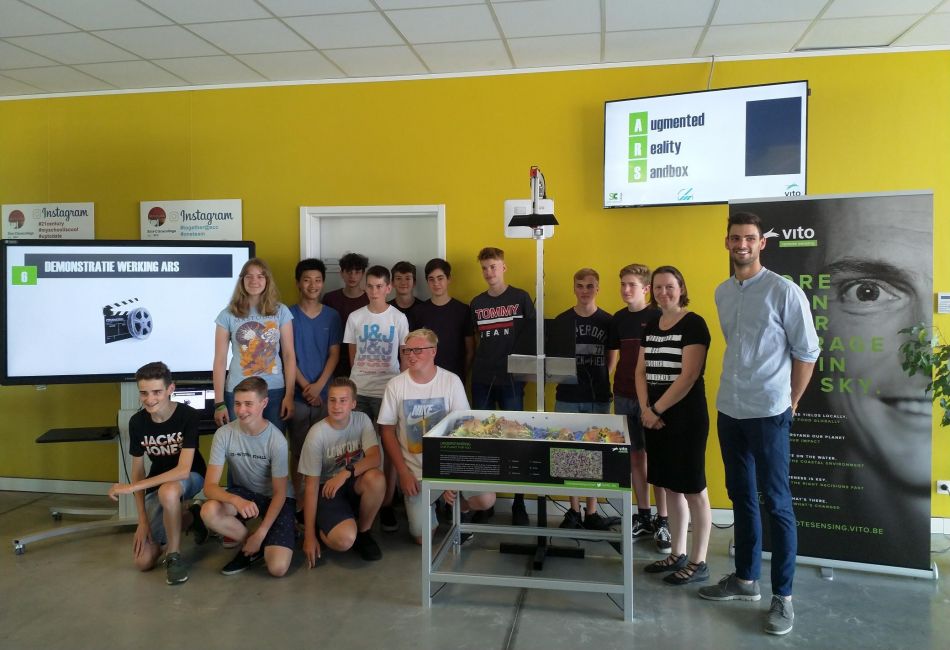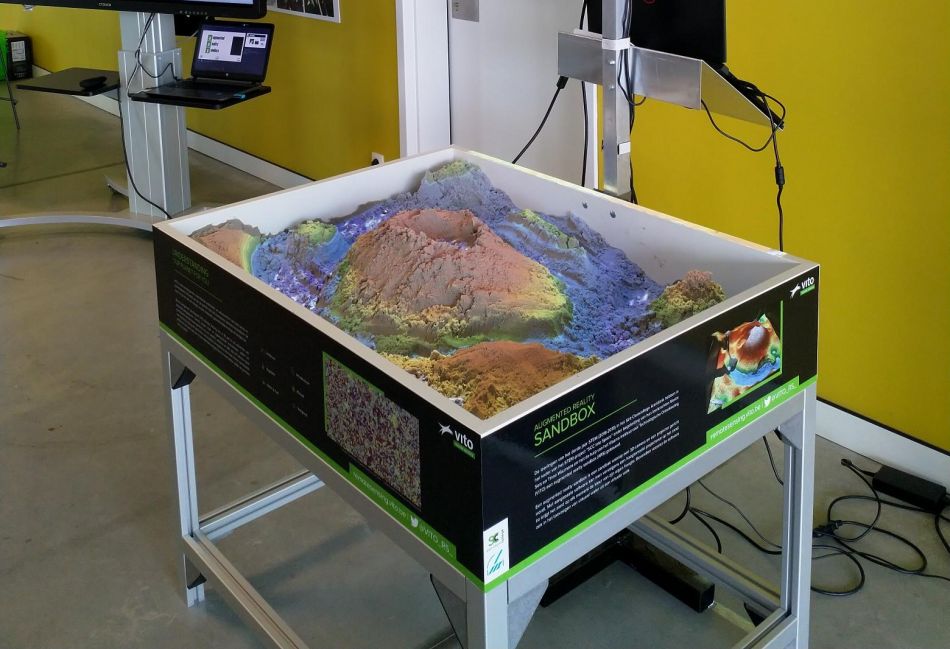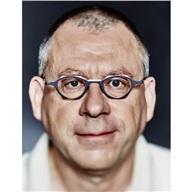The students of the third year STEM of the Sint-Clara college (SCC) Arendonk have handed over an Augmented Reality Sandbox (ARS) to VITO. This ARS will now be transported to the exhibition area of the Volksterrenwacht MIRA in Grimbergen.
Arendonk, 24th June 2019. Motivating youngsters for Science, Technology, Engineering and Mathematics – STEM – is one of the most important goals on the agenda of the Flemish government. This is how the government wants to help resolve the gaps in Flemish businesses and research. One of the ways to do that is cooperation between schools and research organisations.
In the STEM project ‘SCC into Space’ and under guidance of the teachers Maxim Sels and Tinne Waumans, students of the third year STEM have received support from VITO to develop an Augmented Reality Sandbox (ARS). This ARS is a kind of sandbox where a 3D camera and projector are pointed to. Adjusted software allows to project an altitude model onto the sand. By doing so, the sand will get the colour of each own height at any moment. The software also allows to add virtual water from a virtual cloud.
The students have designed the sandbox with the 3D programme Sketchup. Some students have learned the specifics of the hardware and have chosen the right beamer and Linux computer. Another task was the calibration of the sandbox: the projector and 3D camera must be aligned perfectly. The students are also finalising a website with a manual for the ARS. This is how the construction of a good ARS perfectly meets the need from the STEM disciplines for more projects using diverse STEM courses like geography, computer sciences, mathematics … With the ARS there is for example also a direct connection with satellite technology. Just like the 3D camera of the ARS studies the sand surface, this is also how satellites study the earth. In this way, the STEM students have gained insight in the way how satellite images are being produced. VITO is an indispensable partner for this. The VITO unit Remote Sensing has more than 20 years expertise in earth observation through satellites and drones. In a next phase of the project, through “What do we learn from satellite date?”- a bundle made up by ESERO Belgium, VITO and KU Leuven – the students have been able to extract climate changes from satellite data.
The students of SCC have also been given an extra challenge. Their ARS is now moving to the exhibition area of the Volksterrenwacht MIRA. There it will be used intensively. The ARS must therefore be very stable. There are also plans to loan the ARS to schools through Volksterrenwacht MIRA.




